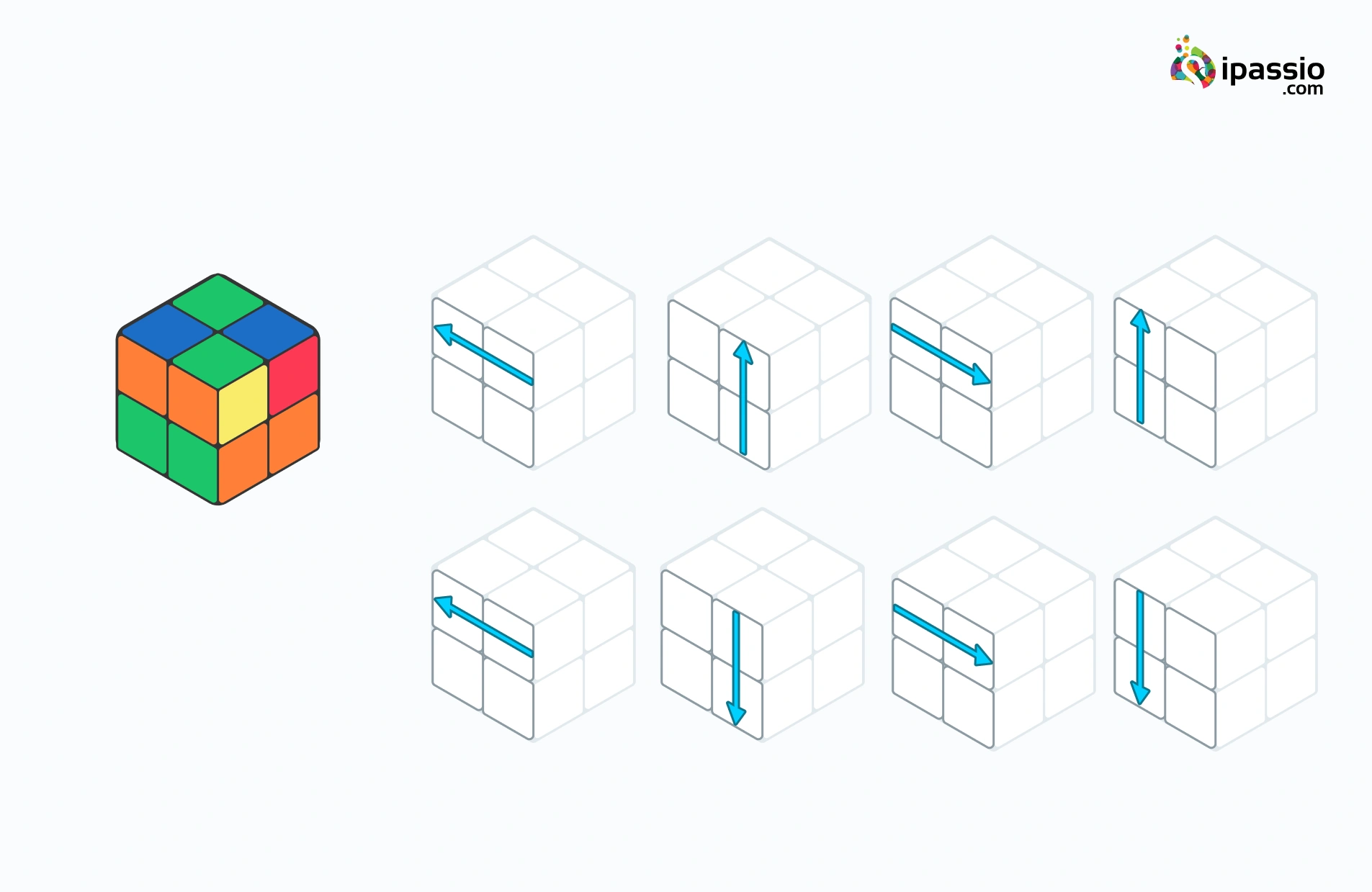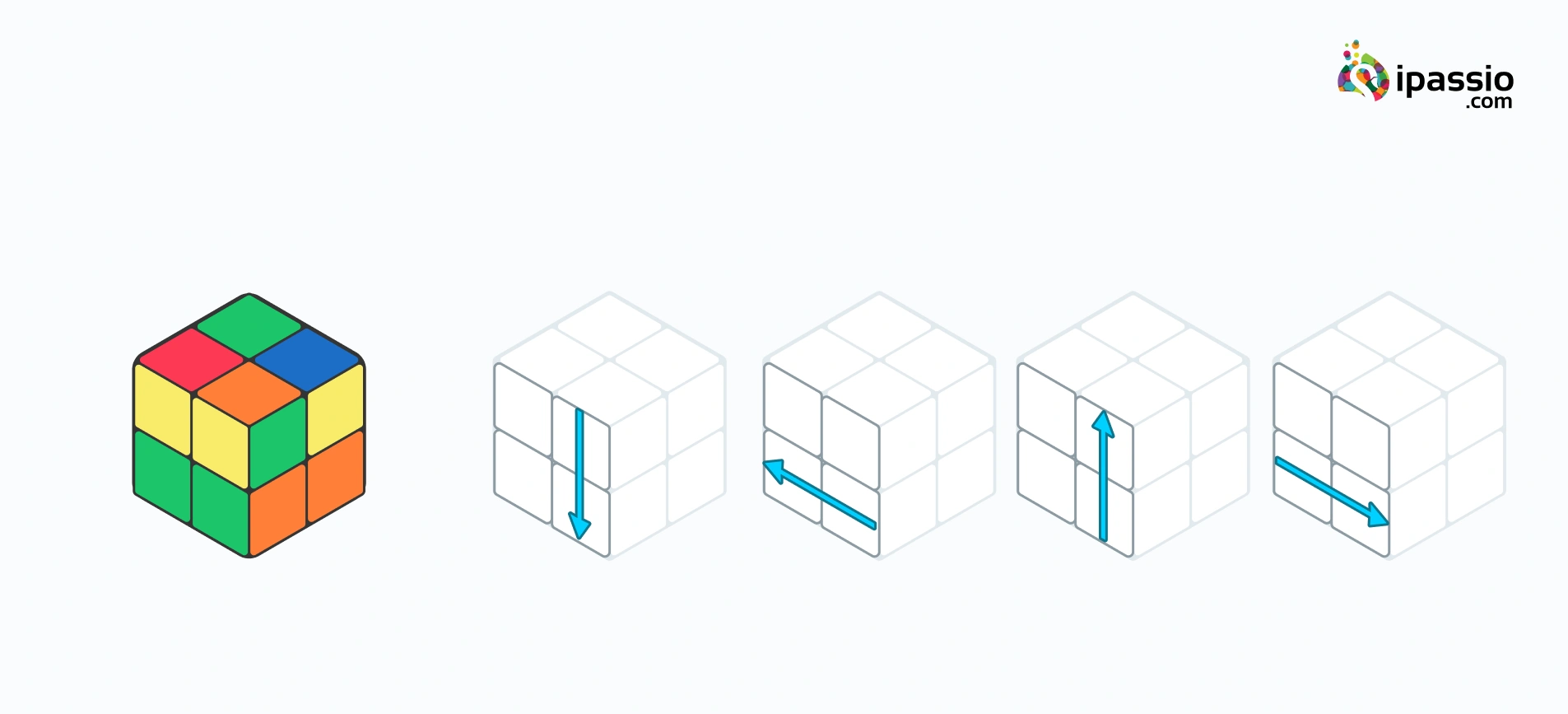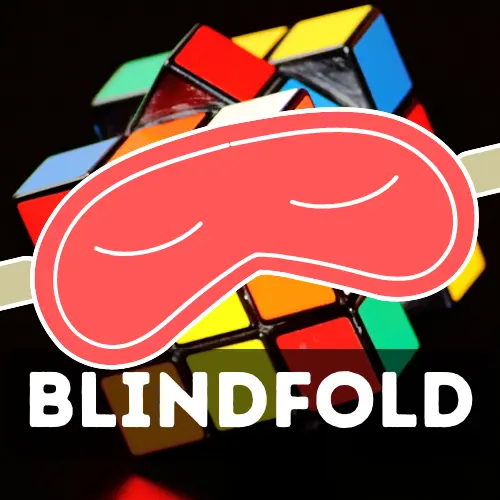How to Solve a 2x2 Rubik's Cube: Step-By-Step Guide
It was a talent show at the school. Amidst all the glam and glory of music, dance, recitation, and drama, one boy took the center stage and addressed, ‘I’ll just take one minute. Or more, if you’d like to play more’.
He had a 2x2 Rubik’s cube in his hands. He introduced his friend who would scramble the cube for him for the first time and then it would be the audience's turn to scramble the cube for him. And he will solve it in under 10 seconds.
And it rolled - his friend scrambled the cube for him. The stopwatch, set at exactly 10 seconds, started to tick. And lo! It had barely ticked for 7 times and the boy was standing flaunting the solved cube to the audience. Then he threw the cube to the audience to scramble it for him. This time he took nine seconds to solve.
A few more rounds between 7, 7.5 to 9.4 seconds at max. It was one of the most engaging performances that kept the audience on the edge of their seats - throughout.
His fingers moved faster than the clock hand. It was hard to follow. It almost felt like magic. And the winner’s smile he gave each time after solving the cube was priceless.
Did we say - ‘magic’? No, it's not magic at all. It’s a skill that anyone can learn, including you!
Whether you’re inspired to impress your friends, compete in a speed-solving contest, or just want the satisfaction of cracking the cube, this guide will walk you through the steps to solve 2x2 Rubik’s Cube. With a little practice, you’ll be the one wowing the crowd in no time.
4 Easy Steps to Solve 2x2 Rubik’s Cube
Step 1: Get to Know Your 2x2 Cube
Step 2: Solving the First Layer
Step 3: Algorithms to Solve the Last Layer
Step 4: Permute the Last Layer (PLL)
Solving a 2x2 Rubik’s Cube can be a fun and rewarding puzzle for all ages. While it’s smaller than the classic 3x3 cube, it still packs a punch in terms of challenge. So let’s dive into it.
Step 1: Get to Know Your 2x2 Cube
The 2x2 Rubik’s Cube, also called the Pocket Cube, has 8 corner pieces. Unlike the standard 3x3 Rubik’s Cube, it doesn’t have any center or edge pieces. You will be solving the cube by orienting and positioning all 8 corners correctly.
Here’s a quick rundown of the cube’s parts:
- Corners: These are the small cube pieces with three visible colors.
- Faces: The sides of the cube with the same color.
When we talk about solving the cube, we’ll be working to get each face (side) of the cube to be a single color, just like a traditional Rubik’s Cube.
If you want to explore more than the 2x2 Rubik’s Cube, please read: Types of Rubik’s Cube.
Step 2: Solving the First Layer
The first goal is to solve one side of the cube (called a “face”). To keep it simple, we’ll start with the white side. Here’s how to do it:
- Pick the white corner pieces and get them to the white side.
- While placing these pieces, make sure that the side colors (the other two colors on the corner pieces) match the side centers. This way, you don’t just solve the white side—you set yourself up for the next steps.

Pro Tip: Don’t worry if it feels tricky at first. Take your time placing each piece, and if one move undoes another, just try again!
Step 3: Algorithms to Solve the Last Layer
Now that you’ve solved the first layer (let’s say it’s the white face), the next step is solving the last layer, which is usually yellow. To solve this, you’ll need to use algorithms—a set of moves that will help you rotate pieces without messing up what you’ve already solved.

What is an Algorithm?
Think of an algorithm as a series of instructions or steps. It’s like following a recipe to bake a cake—you just do one thing after another until it’s complete. For the cube, an algorithm is a specific sequence of turns that helps move pieces to the right places.
Here’s a simple example of an algorithm:
- R U R’ U’: This means turning the Right side of the cube up (R), then turning the Upper side to the left (U), turning the Right side back down (R’), and finally turning the Upper side back (U’). Practice this, and you’ll start to see how it moves the pieces around.
When you get to this stage of solving the cube, you’ll use algorithms to:
- Orient the last layer (OLL): This means getting all the yellow pieces on the top face.
- Permute the last layer (PLL): This means arranging the yellow corners so all the sides match the colors.
By practicing these algorithms, you can solve the entire 2x2 cube.
Step 4: Permute the Last Layer (PLL)
Once the yellow face is oriented (all yellow corners on top), you might still need to move the corners around to match the side colors. Use one final set of algorithms to rotate the pieces in place until the cube is fully solved.

Common Mistakes and How to Avoid Them
Solving the 2x2 cube is fun, but it can be easy to make a few mistakes along the way. Here are some common mistakes and how to fix them:
- Mixing Up Algorithms: If you accidentally mix up the steps in an algorithm, you can scramble the cube even more. Go slowly, and follow the steps carefully.
- Over-Rotating: If you turn a layer more than you’re supposed to, you could lose track of where the pieces should go. Always count your turns!
- Forgetting to Practice: Like anything, solving the cube takes practice. The more you do it, the easier it gets!
Speed Tips: How to Solve Faster
Want to become a faster cuber? Here are a few tips:
- Learn Finger Tricks: Finger tricks are small, quick moves that help you turn the layers of the cube faster. Instead of using your whole hand to turn a side, try using just your fingers.
- Plan Ahead (Lookahead): As you solve one piece, try to plan your next move. This is called lookahead, and it helps you solve the cube faster by minimizing pauses between moves.
- Minimize Rotations: Try to reduce how often you turn the entire cube in your hands. The less you rotate the cube, the faster you can solve it.
Advanced Techniques for Solving the 2x2 Rubik's Cube
Once you feel comfortable solving the 2x2 Rubik's Cube using basic methods, you can explore advanced techniques to improve your speed and efficiency. Here are two popular methods: the Ortega Method and the CLL Method.
Ortega Method
The Ortega Method is a great way to solve the 2x2 cube faster by focusing on one face first. Here’s how it works:
- Solve One Face: Start by solving any face of the cube completely, just like in the beginner method. Make sure all corner pieces on that face are correctly positioned.
- Orient the Last Layer: After completing one face, you will orient (turn) the remaining corners of the last layer without disturbing the solved face. This step uses specific algorithms to ensure that all yellow stickers (if you started with a white face) are facing up.
- If no yellow stickers are facing up: Use this algorithm:
- R U R' U R U2 R'
- If one yellow sticker is facing up: Repeat until more yellow pieces align.
- If two yellow stickers are facing up: Use:
- R U2 R' U' R U R'
- If no yellow stickers are facing up: Use this algorithm:
- Permute the Last Layer: Finally, position the remaining corners correctly. If they need to be swapped, use this algorithm:
- U R U' L' U R' U' L
The Ortega Method is efficient because it reduces the steps needed to solve the cube, allowing for faster solves once you master it.
CLL Method (Corners Last Layer)
The CLL Method is another advanced technique that focuses on solving one layer and then all corners of the last layer together. Here’s how to use it:
- Solve One Layer: Start by solving one complete cube layer, including all adjacent colors matching.
- Use Algorithms for Last Layer Corners: Once you have one layer solved, you will use specific algorithms to orient and permute all corners of the last layer in one go. This method requires memorizing 42 different algorithms, but it significantly speeds up your solves.
For example, if you have a specific case where only some corners need orientation or positioning, you can apply an algorithm tailored for that situation.
- Complete the Cube: After applying the necessary algorithms, your cube should be solved in fewer moves than with basic methods.
Why Use Advanced Techniques?
- Speed Improvement: Both methods allow for quicker solves compared to beginner techniques.
- Efficiency: You will learn to recognize patterns and apply algorithms more fluidly.
- Challenge Yourself: Mastering these techniques can be a fun way to improve your cubing skills and challenge yourself further in speedcubing competitions.
Exploring advanced techniques like the Ortega and CLL methods can take your 2x2 Rubik's Cube solving skills to new heights. With practice and dedication, you'll be able to solve the cube faster and with greater confidence. Happy cubing!
How Finger Tricks Help in Speedcubing
Finger tricks are a game-changer in solving the 2x2 Rubik’s Cube quickly. Instead of using your entire hand to turn the face of the cube, you use your fingers to flick it, which speeds up the process.
For example:
- Instead of rotating the upper face with your whole hand, try using your index finger to flick it quickly.
- Use your ring finger or pinky to rotate the right or left sides without letting go of the cube.
With practice, these finger tricks will help you solve the cube faster and with more precision.
Fun Challenges to Try After Mastering the 2x2 Cube
Once you’ve solved the 2x2 cube a few times, why not try some fun challenges to make things interesting? Here are a few ideas:
- Solve with One Hand: Try solving the 2x2 cube using only one hand! This will improve your finger dexterity and make solving even more fun.
- Blindfolded Solving: Once you’ve memorized the algorithms, challenge yourself to solve the cube blindfolded. First, study the cube, then close your eyes and see if you can solve it from memory.
- Timed Solving: Use a stopwatch or timer to see how fast you can solve the cube. Try to beat your own record each time!
So? Now You Know How to Solve 2x2 Rubik's Cube Like a Genius?
Not as yet? Well, we understand. You could still be staring at the cube, twisting and turning its rows and columns and still be left confused. It’s fine. You can learn it from a cubing expert and teacher. You could learn from a friend or pre-recorded tutorial videos. But the scope to learn and explore your full potential will be limited. Rather, find a teacher. And if you don’t know where to start, you could explore Rubik’s Cube Classes Online.














